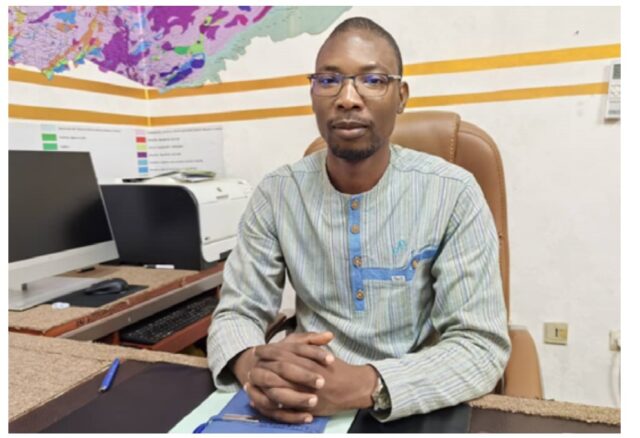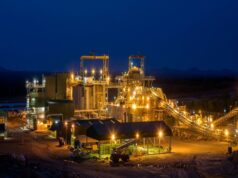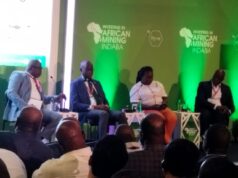In Burkina Faso’s mining sector, the General Directorate of Mining Cadastre plays a crucial role in facilitating the granting of mining titles and authorisations. As a central entity of the Ministry of Energy, Mines and Quarries, it works to put in place transparent and efficient processes to encourage responsible and sustainable mining. The department’s primary mission is to receive and register applications for mining permits and authorisations. As part of the 2023 edition of SAMAO, Mamadou Sagnon, Director General of the Mining Cadastre, talks about the role of his department in facilitating the granting of mining titles in Burkina Faso.
Describe us the role and responsibilities of the General Directorate of the Mining Cadastre in Burkina Faso with regard to the management of mining titles and the supervision of mining activities in Burkina Faso.
The Directorate General of the Mining Cadastre is a central structure of the Ministry of Energy, Mines and Quarries. It is responsible for designing, coordinating and implementing the Ministry’s policy on the management of mining permits and authorisations. As such, it is responsible for receiving and registering applications for mining titles and authorisations, processing and initiating draft acts (decrees or orders) relating to applications for mining titles and authorisations, ensuring compliance with the regulations relating to their management, and publishing mining titles and authorisations. It is also responsible for settling fixed fees and surface taxes and organising the distribution of surface taxes to the beneficiary local authorities in accordance with the legislation in force, checking and ensuring the demarcation of the areas covered by mining titles and authorisations in collaboration with the technical structures concerned, and archiving documents relating to mining titles and authorisations.
What are the main initiatives and activities undertaken by the General Directorate of the Mining Cadastre to promote responsible and sustainable mining in Burkina Faso?
As part of its activities, the General Directorate of the Mining Cadastre is also committed to promoting responsible and sustainable mining. To this end, in line with the international mining principles to which the country is committed through regulatory texts, the process of awarding mining titles and authorisations is governed by requirements in this area. Holders of mining titles and beneficiaries of authorisations are therefore required to comply with applicable regulations on environmental protection and national archaeological and cultural heritage sites, to maintain dialogue with local authorities in the area where mining activities are taking place, to require the use of personal protective equipment on site, and to prohibit child labour and the use of prohibited chemicals on artisanal mining sites. At the same time, the department conducts awareness-raising missions with local authorities and resource persons on mining regulations relating to the management of mining titles and authorisations, and the process of collecting and distributing surface taxes, in order to ensure a better understanding of the mining sector and the role of each stakeholder in the development cycle of mining projects. In addition, field missions are carried out to check the demarcation of mining sites in operation and to ensure that activities are actually carried out within the limits granted in order to avoid conflicts.
How does the Directorate General of the Mining Cadastre facilitate the process of granting mining titles and ensure that they comply with current regulations?
First of all, I would like to remind you of a few basic principles of the mining cadastre, and therefore of the General Directorate in the process of granting mining titles and authorisations. These are priority in the granting of mining titles and authorisations. Thus, the first to come is the first to be served, with the possibility of a call for tenders. As part of the principle of transparency, the General Directorate of the Mining Cadastre is a public office, open for consultation of maps and cadastral registers relating to mining titles and authorisations. In terms of fairness, the same rules and criteria are applied to all applications for mining permits and authorisations. As for the principle of objectivity, the examination of applications is based on objective and transparent criteria listed in the country’s mining regulations. By applying these principles, complying with the cadastral procedure and complying with the relevant legislative and regulatory provisions, the Mining Registry is able to ensure and facilitate the process of granting mining titles and authorisations. In addition, files are processed via the electronic Mining Cadastre (eMC+) platform, a modern computerised management system accessible online (https://www.cadaestreminier.bf/emc). Mining permits and authorisations are therefore granted according to transparent, objective, efficient and rapid procedures throughout the process of receipt, examination and decision to grant or refuse.
What are the current challenges facing the General Directorate of the Mining Cadastre in its work, and what strategies are being put in place to overcome them?
Current challenges include completing and cleaning up the Mining Cadastre database, improving the eMC+ platform to complete computerisation for online submission of applications for mining titles and authorisations, and dematerialising cadastral procedures. Other measures include issuing mining permits and authorisations within the regulatory deadlines, building staff capacity to meet the new requirements, and enhancing the value of old mining permits and authorisations by selling off mining assets so that more mining taxes and royalties can be collected to support the national economy. In response to these difficulties, a number of measures have already been taken, based on strategies deemed appropriate. These include ongoing negotiations to recruit a consultant to improve the eMC+ system and build staff capacity through the Project to Support the Strengthening of Land and Mining Governance (Projet d’Appui au Renforcement de la Gouvernance Foncière et Minière – PARGFM), the acquisition of new IT equipment to strengthen the Mining Cadastre’s infrastructure and IT network, and the updating of the procedures manual with a view to issuing a decree on cadastral procedures. In addition, the process of processing applications for mining titles has been digitised to reduce the time taken to issue the relevant documents, contracts for the sale of mining assets linked to old mining titles have been signed, and legislative and regulatory texts have been revised, in particular the Mining Code, the decree on the management of mining titles and authorisations, and the decree on mining taxes and royalties, to take account of the new challenges.
How is the General Directorate of the Mining Cadastre promoting transparency and accountability in Burkina Faso’s mining sector?
The documents held by the mining cadastre cannot remain “secret” in the eyes of any potential investor or active operator. They can and must know what is happening with mining property in Burkina Faso, where they want to prospect and possibly set up operations. To this end, the maps and registers of mining titles and authorisations are public. However, insofar as the Mining Registry has a discretionary duty over certain strategic documents specific to a company, such as balance sheets, materials, methods and production, the publication of certain information may be restricted. The Mining Cadastre is a stakeholder in the Extractive Industries Transparency Initiative and is committed to transparency and accountability. In the process of allocating mining titles and authorisations, as previously announced, the rules remain the same for all without discrimination. The basic data concerning the life of mining titles and authorisations is online on the eMC+ platform, and the list of the various mining titles and authorisations is periodically published https://itie-bf.bf and https:// www.ecadastreminier.bf and in the Journal Officiel du Faso. In the interests of transparency, the Mining Registry makes the registers of mining rights available to the public by typology for information purposes. From now on, an annual report on the management of mining titles and authorisations will be published.
How is the General Directorate of the Mining Cadastre working with other parties involved in the mining sector to improve the management of mining titles and promote responsible mining?
As part of the management of mining titles and authorisations, the Directorate General of the Mining Cadastre collaborates with many other departments within the Ministry responsible for mines and other ministerial departments such as finance, the environment and territorial administration. These collaborative relationships consist of information sharing and technical advice on the availability of areas for the allocation of mining titles and authorisations.
This article was excerpted from the magazine Spécial #SAMAO2023
Download the entire magazine at this link:
#Mines_Actu_Burkina










